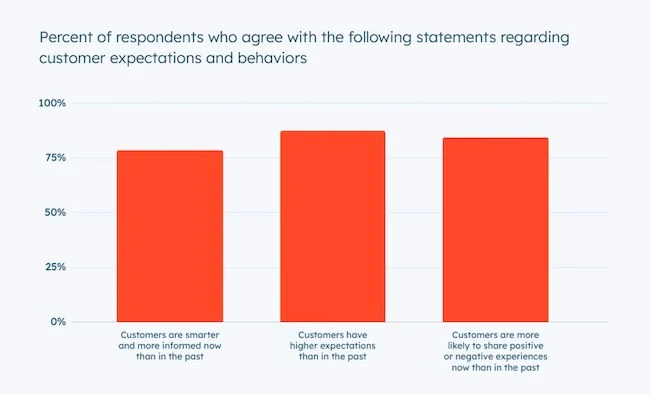10 Ways to Grow Your Small Business

No matter what kind of small business you run, you’re going to want to increase your sales and grow your revenue. That’s why so many people are interested in how to grow a small business.
There isn’t an easy one-size-fits-all business growth strategy for small business owners. But, there are key strategies you can use to give your business the best chance at growing.
10 Ways to Grow Your Small Business
Scaling your small business effectively and efficiently can be difficult. It requires a smart approach and effort from various parts of your company, including:
- Sales
- Marketing
- Finance
- Legal
And because you’re still a startup, you may find yourself wearing many hats until you can hire expert employees. Although growing your small business will take time and energy, there are 10 strategies you can use to help accelerate business growth.
1. Do Your Research
When you’re looking into how to grow your small business, you need to do market research. This not only lets you better understand your existing customers, but also your potential customers. It’s important to gain insight into your target market and know what their needs are. That way, you can see how your business can grow and change to meet those needs.
Don’t forget to research your competitors, too. Knowing what their strengths and weaknesses are can help drive your decisions on how to appropriately scale your small business.
2. Build a Sales Funnel
Your sales funnel can help take business to the next level. Think of a sales funnel as a customer’s journey. When they enter your business or visit your website, they’re at the top of the funnel. When they buy something or sign up for a service, they’ve successfully gone through the funnel. You should try to come up with ways to move people through the funnel to make a sale. This can include offering a discount or getting their contact information and sending them updates on your business.
3. Increase Customer Retention
 It’s not enough to just get new customers for your business. You also need to keep your existing customers coming back. When you increase customer retention, you’re building customer loyalty, which can increase sales.1
It’s not enough to just get new customers for your business. You also need to keep your existing customers coming back. When you increase customer retention, you’re building customer loyalty, which can increase sales.1
Considering it costs five-times as much to get a new customer than it does to keep a current one, focusing on retaining customers means your business won’t spend money on something that isn’t a guaranteed investment.2
You can increase your customer retention by:
Prioritizing customer service: If you don’t treat your customers right, they won’t want to support your business. Making sure you address their concerns and give them the best experience possible shows you value them as a customer.
Using a customer relations management (CRM) system: CRM systems help your business manage relationships with existing and potential customers. They help you maintain customer information and identify sales opportunities. One of the biggest benefits is that the data gets stored in one place, so you and other employees who need it can access it.
Creating a customer loyalty program: These programs reward your existing customers for supporting your business. They can also help you attract new customers or get back those that left your business.
Launching an email campaign: Using an email campaign can help make sure your business stays on top of customers’ minds. It’s also a great way to move existing and potential customers through your sales funnel.
Engaging with customers on social media: Your customers may reach out to your business on social media with a question or to share feedback, pain points or complaints. Taking the time to respond and engage with them shows you value their thoughts and take their concerns seriously.
Keep your promises: No one likes feeling forgotten. If you tell a customer you’ll follow up with them with more information or contact them at a later date, do it. If you don’t, it can give your customers a bad impression of your business.
4. Participate in Networking Events
Increasing your brand visibility can help you attract new customers and grow your business. A good way to do this is by attending networking events. Check local professional organizations and don’t be afraid to attend a few events to get the word out about your business.
You can participate in these events by:
- Attending and meeting other business owners
- Putting up a booth to promote your business
- Speaking as an industry expert
5. Practice Corporate Social Responsibility
Many customers want to do business with a company that matches their own values. Corporate social responsibility (CSR) means you recognize the impact your business has on all aspects of the community. Letting the public see what your business is doing to have a positive impact can help your business’ bottom line.
Some examples of how your business can practice CSR are:
Going green: The benefits of running a green business go beyond having cheaper utility costs. It shows the public you’re serious about reducing your business’ impact on the environment. Go green and make changes to reduce your carbon footprint, such as getting Leadership in Energy and Environmental Design (LEED) certification or pursuing energy-efficient projects.
Giving back to the community: Encourage your employees to volunteer in the communities they live and work in. Whether it’s working at a food bank or cleaning up open spaces, these kinds of activities show that your business is serious about investing in the area and people.
Producing sustainable products: Find out if there are ways you can change materials or your process to create more environmentally-friendly products.
6. Form Strategic Partnerships
Entering a strategic partnership with another business can give you the chance to reach a broader network of customers or align growth with strategic goals in your business plan. One example of a successful strategic partnership is between Starbucks and other national stores, like Barnes & Noble or Target. The partnership puts the coffee chain into many retail stores across the country, which increases its reach and revenue.
You may even form a strategic partnership with a vendor to help expand your business. Whatever type of partnership you form, it’s important you manage business relationships and maintain effective vendor relationships.
7. Consider Franchising Your Small Business
Business franchising is a common growth strategy for small businesses. This means you sell your business’ rights to an independent owner. Then, they open and operate their own franchise of your business. Many well-known companies sell franchises, like McDonald’s, Starbucks and Marriott hotels. When a new franchise opens, it increases the number of locations of your business, which helps bring in more revenue.
Before you agree to sell the rights to your company, you have to know is your business franchisable? The franchising process is more appropriate for certain types of industries, such as fast food restaurants or gyms.
8. Diversify Your Product or Service Offerings
You’ve had success selling your main product or service to customers. After all, that’s what made you think of growing your small business. Now, offering different products or services can help you get new customers. You can do this by:
- Identifying opportunities for new products or services: Do market research to see if there’s something new you can offer your customers to buy.
- Finding different ways to offer your existing products: This includes subscriptions or bundles.
One business that grew by diversifying its product offerings is Moment. The company’s initial products included lenses for smartphones to improve photography. Now, the company has expanded its offerings to include apps and accessories to use with its lenses.
9. Extend to New Markets
There’s no question that franchising gives you a chance to increase your customer base. But if your business isn’t franchisable, there are alternatives to franchising, such as expanding your business through exporting.
Finding exporting opportunities means you can ship your products and services across the globe. The benefits of exporting include:
- Leveraging global platforms to sell your products and services online
- The opportunity to open new business locations
- Access to more customers and businesses
Take your business global and give your company an opportunity to increase its market share.
10. Measure What Works and Refine as You Go
While there are a variety of strategies you can use to grow your small business, it’s important you measure what’s working. For example, if you create a customer loyalty program and find it’s not improving customer retention, you may need to change your strategy. Maybe it’s getting a CRM and engaging with your customers on a regular basis, or engaging with them through an email campaign or on social media.
 Growing your small business means you’ll have to take calculated risks. You should look at your business plan and make realistic and accurate forecasts of how you think certain strategies can affect your business. Regularly monitoring your progress and making updates are key to having a successful business.
Growing your small business means you’ll have to take calculated risks. You should look at your business plan and make realistic and accurate forecasts of how you think certain strategies can affect your business. Regularly monitoring your progress and making updates are key to having a successful business.






Responses